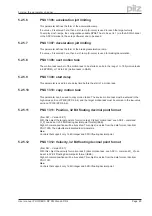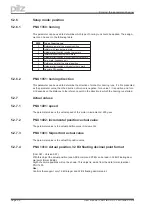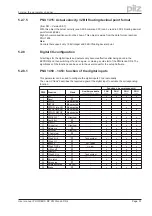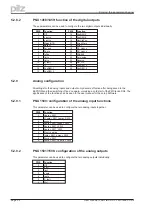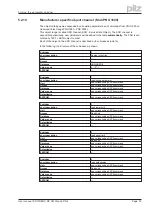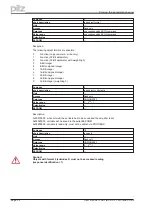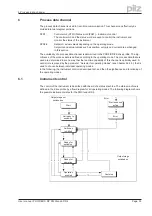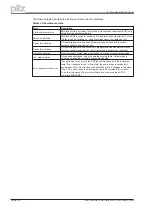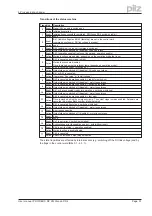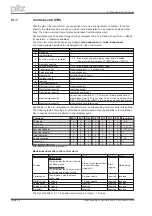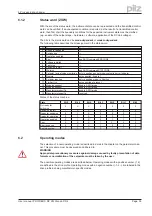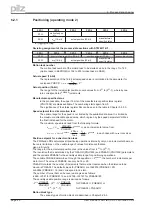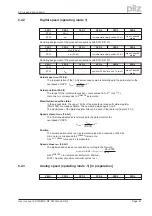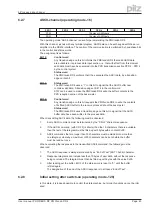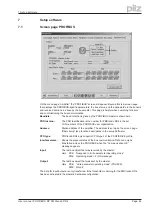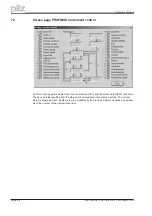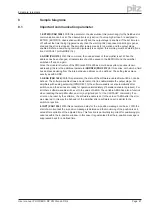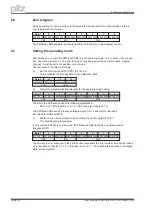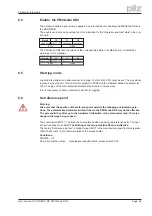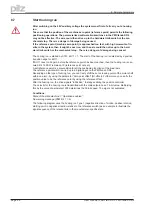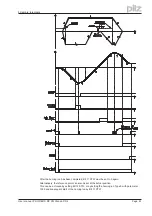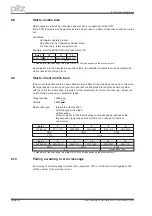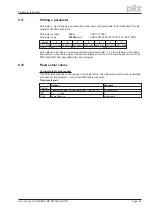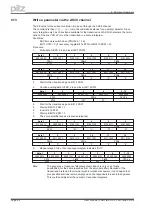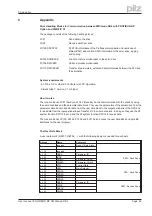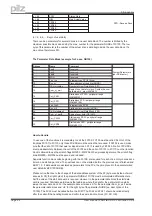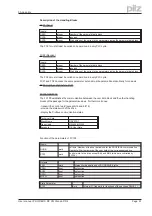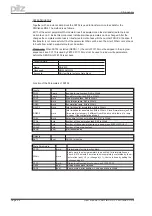
6.2.7
ASCII-channel (operating mode -16)
PZD 1
PZD 2
PZD 3
PZD 4
PZD 5
PZD 6
STW
10 bytes of ASCII-data
ZSW
10 bytes of ASCII-data
The operating mode “ASCII-channel” is used for parameterizing the PMCtendo DD4.
With this channel, just as with any terminal program, ASCII data can be exchanged with the servo
amplifier via the RS232 interface. The control of the communication is performed by handshake bits
in the control and status words.
The assignment is as follows:
Bit 12:
Control word
Any transition edge on this bit informs the PMCtendo DD4 that valid ASCII data
are available in its process data input section, i.e. that with effect from this moment
valid data must have been entered into the PZD transmission section PZD 2 - PZD 6
by the control system.
Status word
The PMCtendo DD4 confirms that it has accepted the ASCII data, by a transition
edge on this bit.
Bit 13:
Status word
The PMCtendo DD4 uses a “1” in this bit to signal that the ASCII buffer now
contains valid data. A transition edge of Bit 14 in the control word
STW can be used to make the PMCtendo DD4 write the buffer contents to the
PZD reception section of the bus-master.
Bit 14:
Control word
Any transition edge on this bit requests the PMCtendo DD4 to write the contents
of its filled ASCII buffer to the receive process data of the bus master
Status word
The PMCtendo DD4 uses a transition edge on this bit to signal that the ASCII
buffer data have been written to the process data.
When transmitting ASCII data, the following must be observed:
1.
Every ASCII command must be terminated by the “CR LF” character sequence.
2.
If the ASCII command (with CR LF) is shorter than the 10 characters that are available,
then the rest of the telegram must be filled up with bytes with a content 0x00.
3.
ASCII commands that are longer than 10 characters must be divided into more than
one telegram, whereby a maximum of 30 characters can be sent before the buffer
must be read out once.
When evaluating the responses to the transmitted ASCII command, the following must be
observed:
1.
The ASCII response is always terminated by an “End of Text” (EOT = 0x04) character.
2.
Response telegrams can include less than 10 bytes of user data, without the response
being concluded. The telegram must then be filled up with bytes with the value 0x00.
3.
After reading out the buffer, Bit 13 of the status word is reset to “0”, until the buffer
is filled again.
The designation of the end of the ASCII response is in all cases “End of Text”.
6.2.8
Initial setting after switch-on (operating mode -126)
In this state, it is indeed possible to control the state machine, but motion functions cannot be initi-
ated.
User manual PROFIBUS DP PMCtendo DD4
Page 43
6 Process data channel

